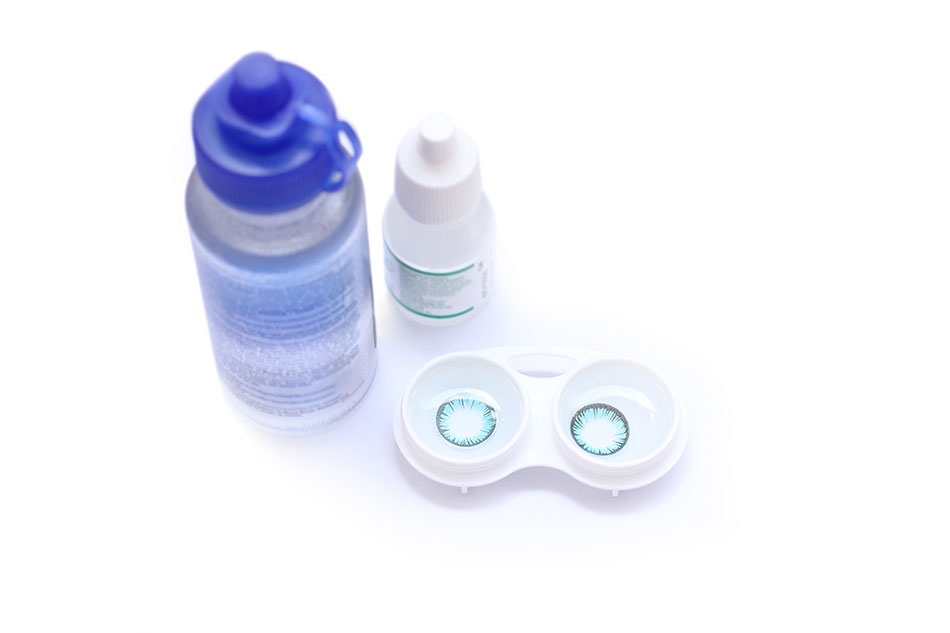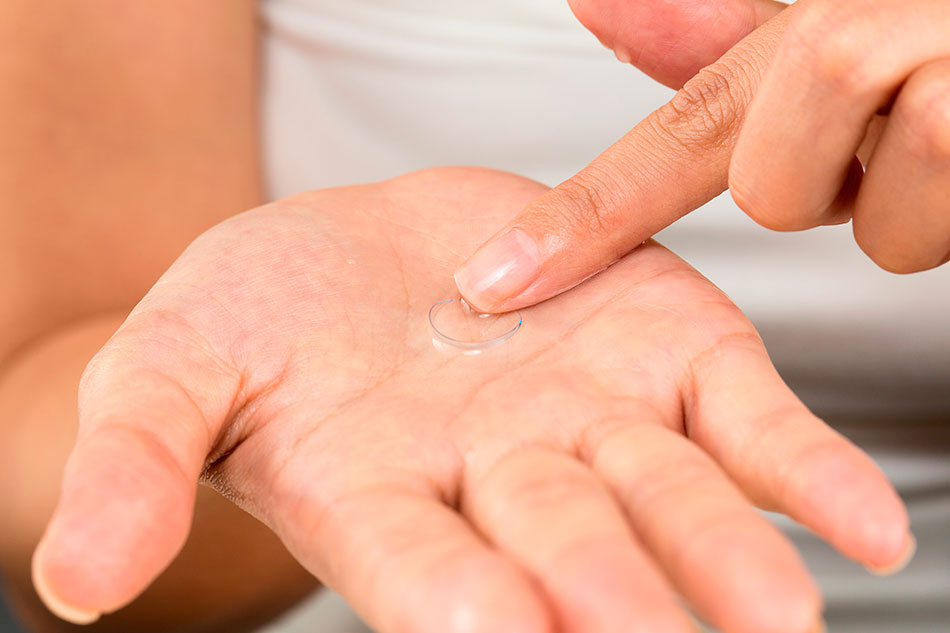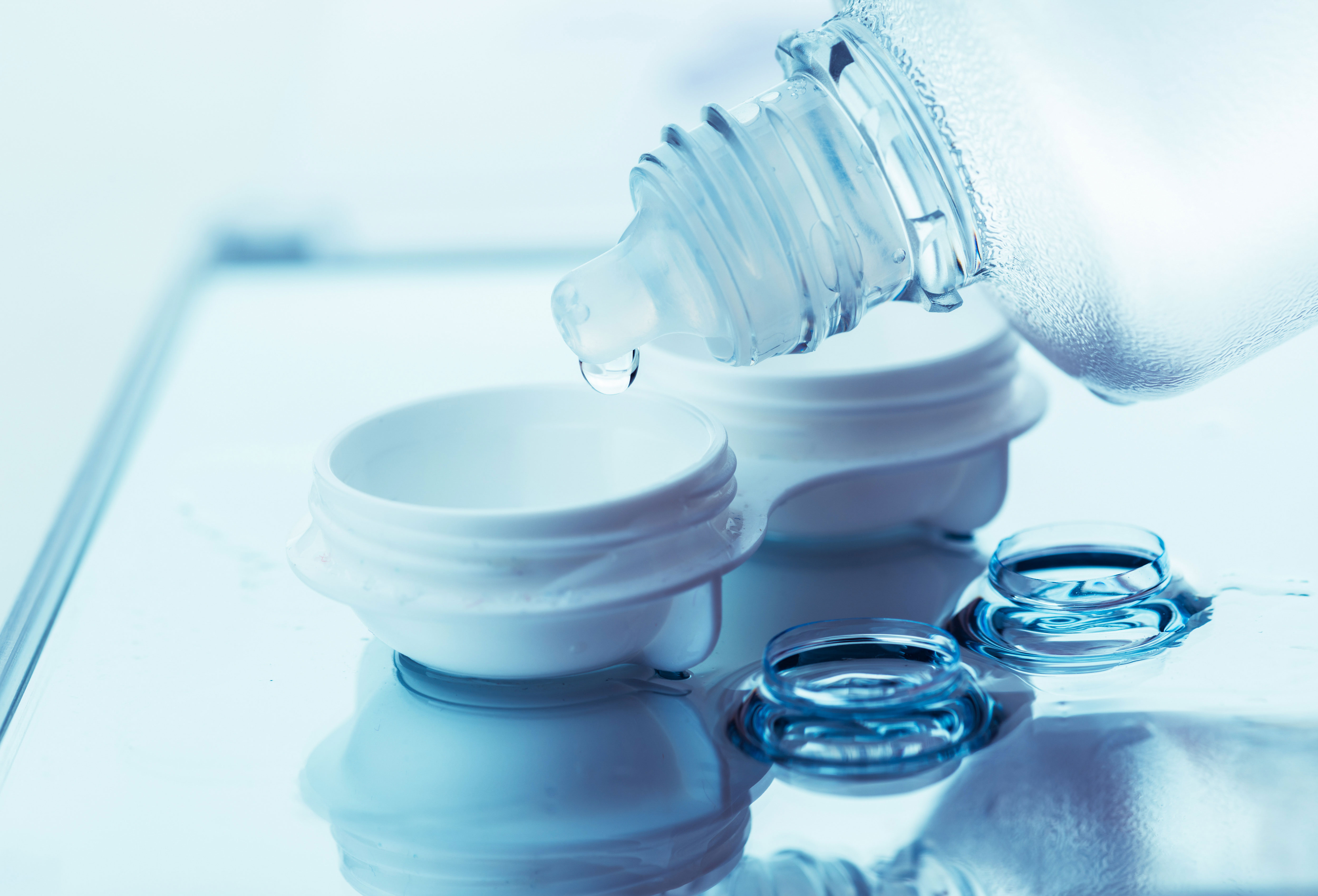How to Choose the Best Contact Solution

Contacts lenses are more convenient than glasses, that’s for sure. But they can lead to serious complications if you don't follow cleaning procedures. Despite this, as much as 90% of contact lens wearers don't clean and care for their lenses correctly.
Finding the right contact lens can be a little confusing and time-consuming. When it comes to finding the best contact solution, it can be the same. Let’s talk about the best way to clean and sanitize your contacts and the best contact solution for your needs. Some information can clear up things and give your contacts the solution you’re looking for. Pun intended.
How to Clean Your Contacts

There are some important steps in cleaning your lenses no matter what solution you use. Remember, when dealing with contact lenses, cleanliness is essential. Failure to follow cleaning procedures can result in serious and permanent consequences.
Always wash your hands with warm water and soap before you put in or remove your contacts. If you put your contacts in without doing so, you risk contaminating them. You also raise your chances of infection. When you're ready to take them out, prepare a clean, sterilized lens container and cleaner.
Remove your lenses one at a time. Place the first lens in the palm of your hand and squeeze a small amount of solution onto it. Rub the lens with the fingers of your other hand for 20 seconds. Place the contact into its container and fill it with the recommended amount of solution. Repeat this process for your other contact.
It's very important that you never rinse or store your lenses in water. Tap water consists of small amounts of bacteria, viruses, and other contaminants. Replace your lens case every three months or whenever you switch to a new kind of contact lens solution.
The two major varieties of solutions are multipurpose and hydrogen peroxide.
Multipurpose Solutions

Multipurpose contact solutions allow you to clean and disinfect your lenses altogether. They contain both effective medical grade detergents and a disinfecting agent. This kind of solution is designed to be an all-in-one solution for your contacts. You can wash, disinfect, and store your contacts with a single type of solution. Allow at least four hours for full disinfecting with all multipurpose solutions.
The two major categories of multipurpose solutions are rub and rinse, and rinse-only.
Rub and Rinse
You need to follow the full cleaning process described above for rub and rinses. They only disinfect your lenses if you rinse and give them a thorough cleansing rub. Once you've done this, you can place them in the sterile lens container for storage. Make sure you secure the lid of your solution case to avoid contamination.
Rinse-Only
Rinse-only solutions market themselves as a rub-free alternative. Instead of rinsing your lens and rubbing them clean with your fingertip, you only have to rinse them off. This type of solution can be great for people with long fingernails or very rough fingertips. But despite the name, most eye doctors recommend you rub your lenses no matter what solution you use.
Hydrogen Peroxide Solutions
This type contains a solution of hydrogen peroxide suspended in sterile saline. Hydrogen peroxide-based solutions disinfect your lenses completely. But they can be a bit more difficult to use than multipurpose solutions.
To clean your lenses with hydrogen peroxide solution, start with the steps above. Depending on the type you choose, it may be a good idea to first rinse your lenses off with a multipurpose solution. This removes any surface contaminants. Plus, it allows the hydrogen peroxide to fully disinfect the lenses.
Here’s a small warning about hydrogen peroxide-based solutions. They are not suitable for refreshing your lenses. Hydrogen peroxide is caustic to the tissue of your eye. You must follow the appropriate steps. It is crucial to wait for the recommended time. This ensures that the hydrogen peroxide is neutralized before wearing your lenses.
There are two broad classifications of hydrogen peroxide-based solutions: one-step and two-step.
One-Step
One-step systems use a cylinder lens case with a neutralizing agent built into it. Once you rinse your lenses, you secure them in the case and fill it with the appropriate amount of solution. You'll immediately see the solution start to bubble and fizz a bit. This is a good sign because it shows that the hydrogen peroxide is being neutralized. Once the appropriate time has passed, usually at least six hours, your lenses will be ready to wear.
Two-Step
Two-step solutions don't have a built-in neutralizing substance. You will need to add a catalyst disc in the lens basket and replace it after around 90 uses. After soaking it for around 15 minutes, you’ll have to rinse with sterile saline. Then, pour the hydrogen peroxide solution out, and fill up the case with rinsing solution. Other than that, you follow the same steps as for a one-step solution. Two-step solutions have been almost entirely supplanted by newer one-step options.
Best Contact Solution for Longer Storage

For cleaning and disinfecting your contact lenses overnight, either solution is fine. For storage of more than a day, a multipurpose solution is the best contact lens cleaner. Hydrogen peroxide solutions do a great job of disinfecting your lenses. But once you’ve neutralized the peroxide, your lenses are just sitting in sterile saline. This puts them at risk for bacteria regrowing and contaminants getting into the case.
Multipurpose solutions don't lose their cleaning and disinfecting capabilities as they work. Once you place your lenses in a multipurpose solution, they'll be good to go for storage as long as you need. When storing your lenses for extended periods, check the expiration dates. Make sure your lenses and solution don't expire while in storage. For your health and safety, throw them away and get new lenses and solution if they do.
So What Is the Best Contact Solution?
The short answer is, it depends. Pretty much any contact solution today will clean and disinfect your lenses effectively. Try out several different varieties and see which one you prefer. Some people swear they can feel the residue of multipurpose solutions. Others can't stand the thought of hydrogen peroxide being that close to their eyes.
The best contact solution for you won't necessarily be the best one for someone else. Speak with your eye care professional about your contacts and the best solution for them./p>